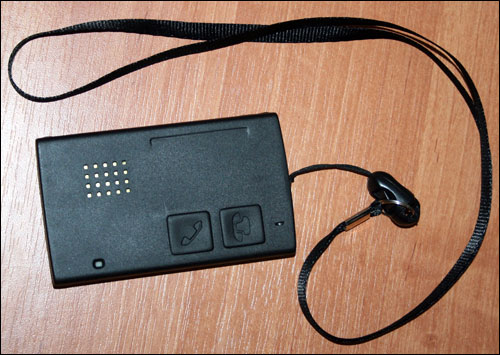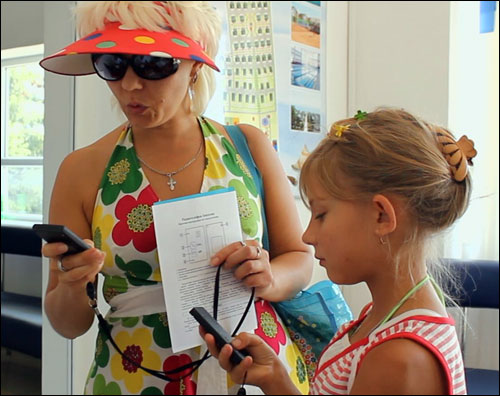Jul 15, 2011Visitors at the Hotel Resort Caprice, in Kyrgyzstan, can try out RFID-enabled devices that can let them locate their children, order beverages and access information regarding hotel activities. The system, known as TalkLoc, allows a guest to contact a hotel dispatcher to obtain services, or to reach other members of his or her group, using Voice over Internet Protocol (VoIP) technology, while TalkLoc's real-time location system (RTLS) functionality provides hotel management with that individual's location as he or she places the call, so that they can then locate that person in order to provide services, as well as maintain a record of where service requests are being made. Since being installed approximately one year ago, says Alex Leipi, Hotel Resort Caprice's property manager, the technology has led to an increase in food and beverage orders, while also enabling management to track its own efficiencies in providing service to its guests.
The system was provided by RTL Service, a Russian startup founded two years ago by a group of engineers at Petrozavodsk State University. The technology—for which the company has received a patent in Russia—was initially designed to be used for such safety applications as identifying personnel and equipment in underground mines. One aspect that makes its product unique, the company notes, is power-saving technology that prolongs the battery life, thanks to a built-in accelerometer that determines when a tag is in motion, and instructs that tag to beacon less frequently while stationary. While the RTLS solution is still in the research and development phase, the company has been testing its technology at the Kyrgyzstan resort, according to Edward Levin, RTL Service's business development director.

In 2010, the company began working with Hotel Resort Caprice, located in the northern region of Kyrgyzstan, at Lake Issyk-Kul. The 21-acre resort features a beach, pools, water slides, a playground and a spa. The TalkLoc RFID-enabled devices allow guests to order food, beverages or other services by placing calls using VoIP via a wireless connection to a hotel dispatcher, and the RFID-enabled devices provide location data so that resort employees can identify the individual's location at the time that the call is placed, as well as afterward. The dispatcher receives the call and routes it to the appropriate employee—such as a bartender, a restaurant worker or a member of the maintenance staff—who can speak with the appropriate party on the tag device.
Workers can then locate the individual on a map displayed on the software, before carrying food, a beverage or some other item to that person. In this way, the staff can locate that individual while delivering, for example, a drink or a beach chair, and also keep a record indicating when the call was placed, where the service was provided and how long the process took to complete. Both the voice calls and the RTLS transmissions comply with the IEEE 802.15.4a standard, communicating with wireless access points installed throughout the facility.
RTL Service provided the resort with around 40 of its waterproof devices, each about the size of a cell phone and attached to a lanyard worn around the neck, or carried within a pocket or purse. The firm installed access points, also known as base stations, throughout the resort buildings and beach area, and provided standalone software to manage data regarding each tag's location, as well as to enable voice communications between the device holder and staff members or another device.
Upon arriving at the facility, each guest receives a tag, and the hotel staff inputs that individual's name into the RTL Service software residing on the resort's database, linking that information to the ID number of the tag that individual will be carrying. If multiple parties check in together, each individual is assigned a separate tag, which can be linked to the tags of all guests checking in with that person, thereby indicating that all of the linked badges belong to the same group or family. Children can be assigned tags linked to their parents' badge ID numbers.

Each tag transmits to access points in the immediate area, transmitting at a faster rate while moving, or at a slower rate when stationary. The access points capture the tag's ID number, and forward that information to the TalkLoc software, where the ID is stored, along with the tag's location, based on each access point's signal strength. If a user requires service from the hotel staff, he or she can press a button on the tag, causing it to call the hotel dispatcher. This service can be utilized either to place an emergency call (in the event that a doctor, or a security or rescue team, is required), or simply to request service.
A dispatcher picks up the call initiated by the button-press, and routes it accordingly. The tag can also be used to locate friends and family members, by simply pressing the button to reach the dispatcher and ask that the call be forwarded, or by pressing one of the two buttons to reach that individual, if the system was programmed to allow that function when the guest signed in.
The system also provides visitors with a way to track their children. Upon receiving their TalkLoc tags at check-in, parents indicate how far from their location their child should be permitted to be. For example, a small child may need to stay within 100 feet of his or her parents, while a teenager might be granted greater freedom—in which case a parent may want to receive an alert only if that teen left the grounds altogether. If a kid leaves the authorized perimeter, a parent receives an alert on his or her device.
RTL Service installed 114 access points throughout the resort's campus, including 70 indoors and 44 outdoors.
Since the system's installation, Leipi says, the resort has provided a questionnaire to users, in order to determine whether they were satisfied with the technology. "The general impression is very good," he states. With TalkLoc, he says, "We can offer our visitors new opportunities—namely, fast communication for services at the hotel."
Another benefit, Leipi says, is the ability to measure the effectiveness of existing service practices, and to determine where service could be improved. "We can analyze orders of visitors, response by staff, in specific zones within the hotel," he explains. "It then allows us to redistribute work accordingly."
Because the devices can be used to order food and beverages from the beach, Leipi says, a greater number of orders are now being placed.
The resort plans to expand its application of the system within the next few years, Leipi says, and could begin charging customers a fee for its use. He adds that 44 percent of questionnaire respondents say they would be willing to pay for this service in the future.
What's more, Leipi says, the resort may add a built-in electronic key into each guest's device, as well as utilize electronic purses enabling users to pay for services or meals.

